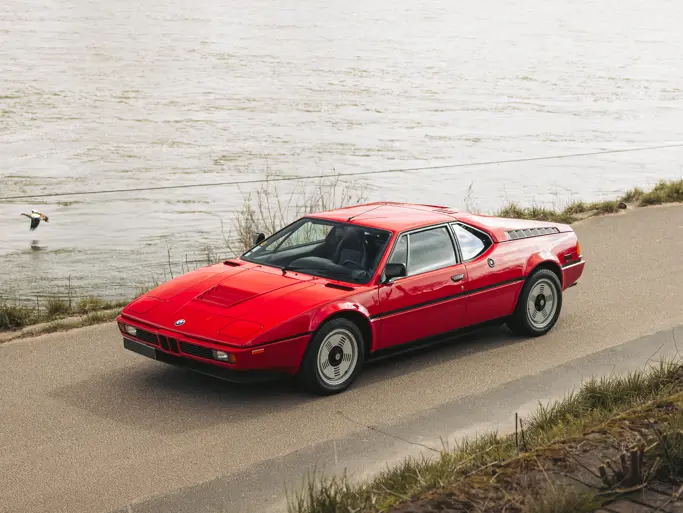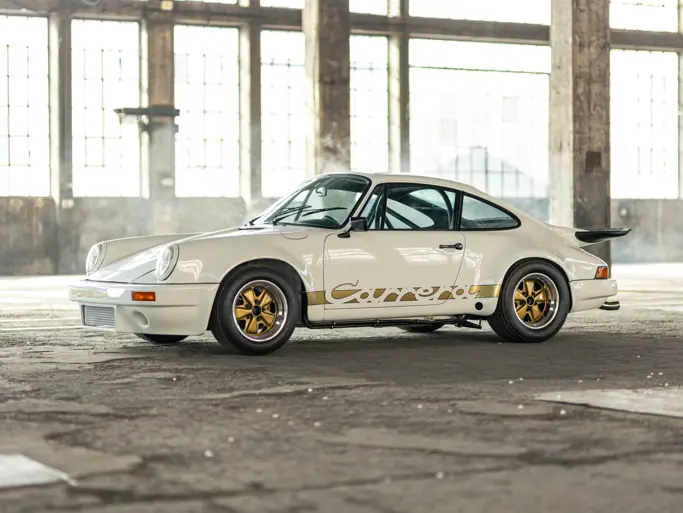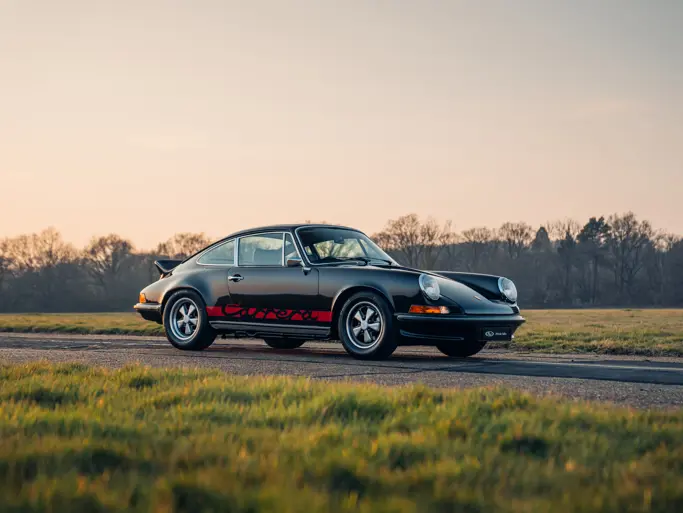The encore to the Mercedes-Benz 190SL and 300SL was first introduced at the 1963 Frankfurt Auto Show as the 230SL, codenamed W113. The 230SL was neither the hairy-chested beast exemplified by the 300SL or the boulevard tourer of the 190SL, as it placed more of an emphasis on safety and comfort. The four-cylinder power of the 190 was gone, and all models were fitted with a Bosch fuel-injected, 2,281 cubic centimeter inline six-cylinder which could produce 150 horsepower. It had the added distinction of the first Mercedes-Benz automobile to be fitted with an alternator as standard equipment. Off-the-shelf components included independent front and rear suspension and servo-assisted front disc and rear drum brakes, which helped to keep development and production costs within reason.
Perhaps most appealing about the car was its unique styling. It was clearly linked to earlier Stuttgart designs, as it featured the broad front grille of the 300SL, albeit in a squared-up shape. As with its predecessors, it was available as a roadster, a roadster/coupe, or a pure coupe. Most distinctive was its roofline, known as the so-called “pagoda roof”, which was designed by Paul Bracq and Bela Barenyi. The upright roofline contained a lot of glass area and had raised sides and a lower center panel instead of one curving conventionally upwards toward the middle, à la a Japanese pagoda.
Production of 230SLs continued until the uprated 250SL made its debut at the 1967 Geneva show. Although horsepower ratings remained the same, the new 2,496 cubic centimeter engine provided more torque for better acceleration. Wheel rims increased from 5.5- to 6-inches in width, and four-wheel disc brakes became standard. The coupe version was eventually dropped.
The 280 SL was the final version, and it made its public appearance early in 1968. Most notable of its changes was the increased engine displacement to 2,778 cubic centimeters, which resulted in a bump in torque and an increase in horsepower to 180. The interior was upgraded, and a myriad of detail refinements were added. The final 280SL came off the assembly line in March 1971, and a total of 23,885 were produced during the model run, making it the most popular of all the roadsters built to date.
The 280SL presented here is the most desirable specification for a “Pagoda,” as it has the more powerful engine and an automatic four-speed transmission. Additional features on this beautifully frame-off restored example includes an attractive color combination of blue with a cream interior, properly functioning air conditioning, Becker Europa AM/FM radio; power steering and brakes.
Further details reveal that the Becker Europa radio is original, as are the accompanying tools and book. The soft-top is new, as are the Michelin tires. The engine is reported to be “new as original” and the Mercedes-Benz also has its accessory removable hardtop. The new wood trim was purchased in Essen Germany and the car is offered with two sets of wheels; the original steel wheels with hubcaps or the later Mercedes-Benz specification cast alloy wheels. This car is being offered by a respected private collection and is noted to have an incredible detailed restoration with all of the “right equipment and accessories.” A final detail is the car being set off by its European version of headlights for a distinctive, incredible look. This model signified the end of the 280SL’s production run.

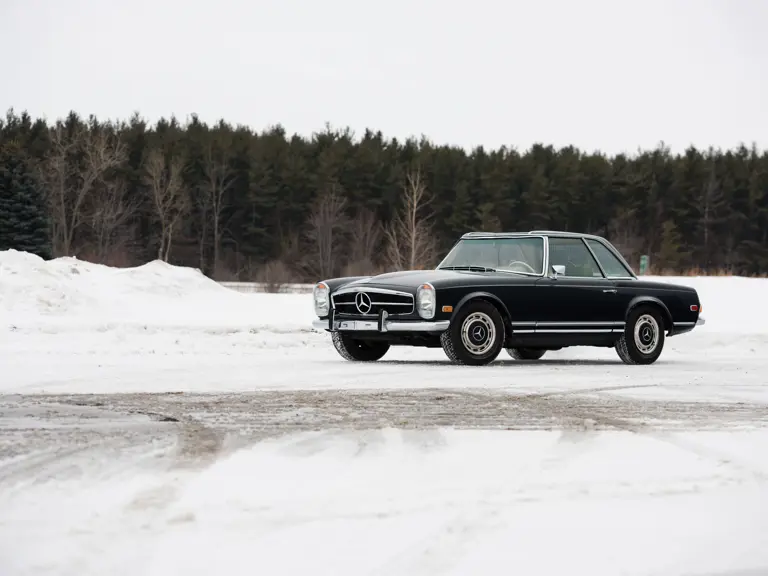
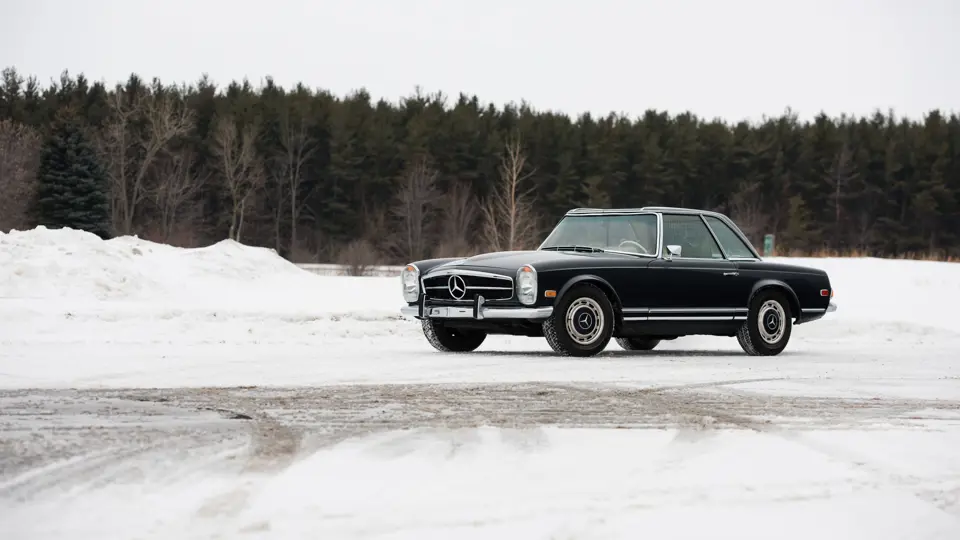
 | Fort Lauderdale, Florida
| Fort Lauderdale, Florida
